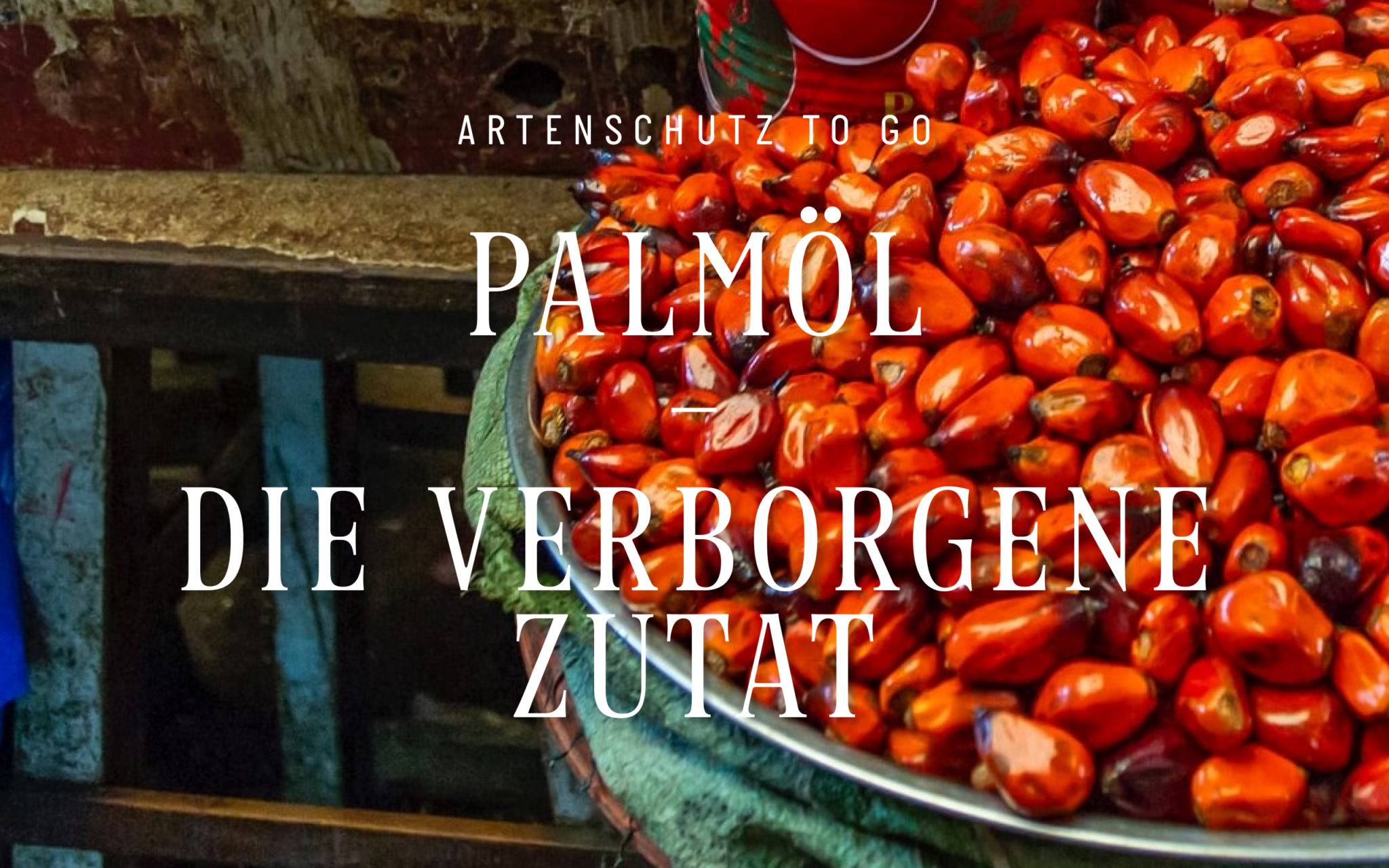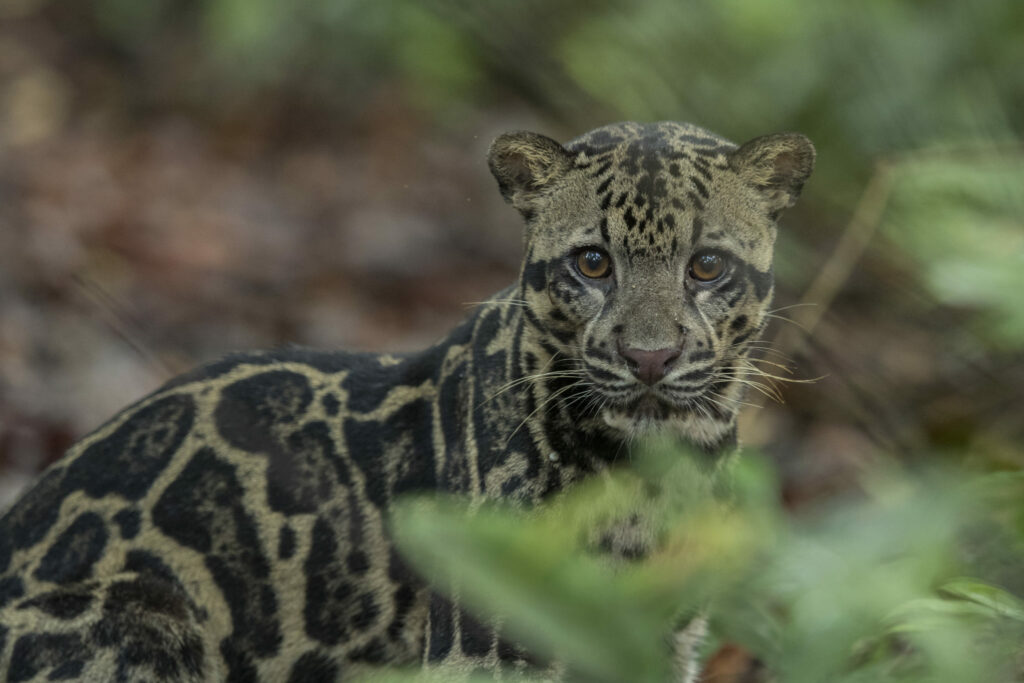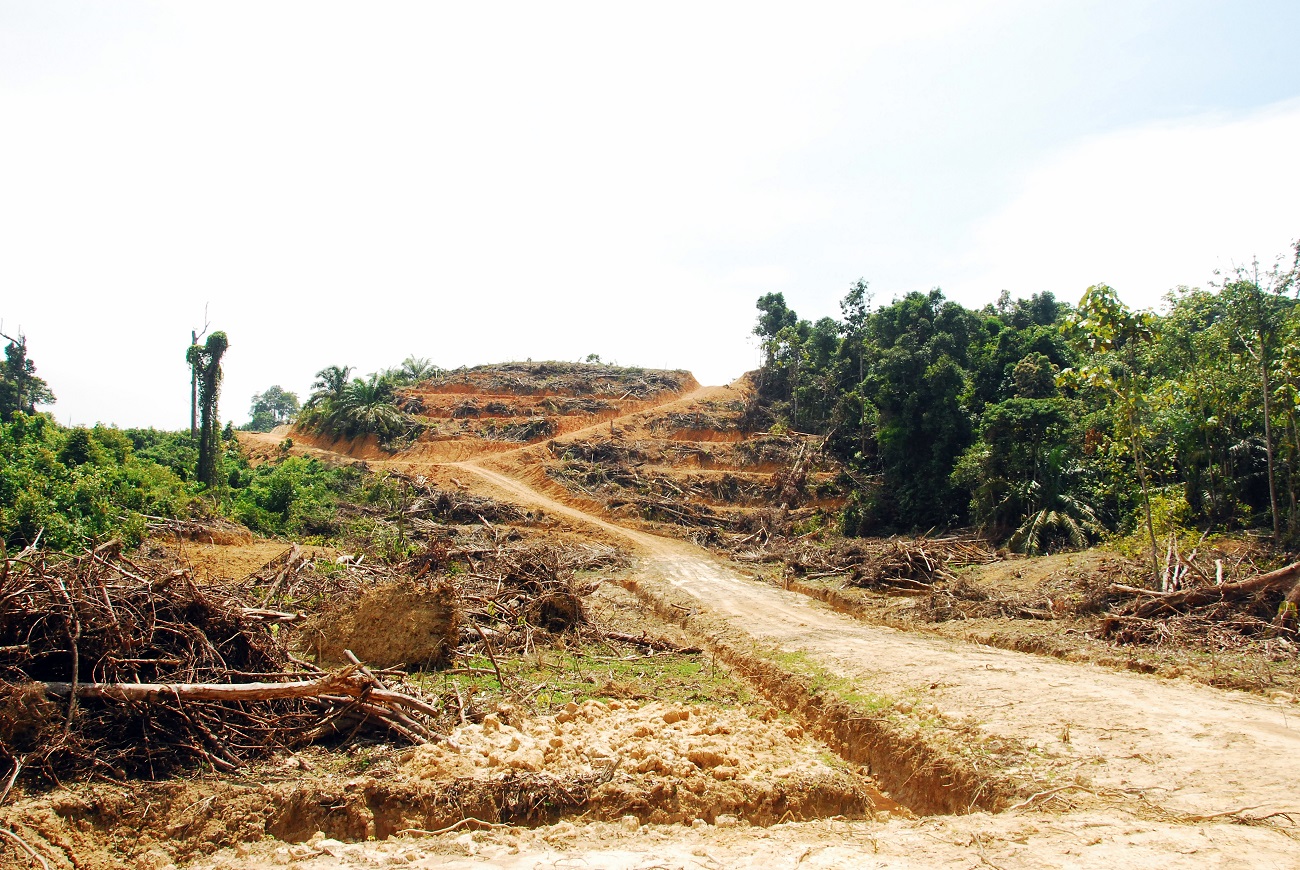
Palm Oil – The Hidden Ingredient

About every second supermarket product contains palm oil or palm kernel oil. Nutella, the universally popular spread, is a well-known example of this. However, palm oil can also be found in numerous other products such as ready meals, ice cream, chocolate, detergents, cleaning agents, cosmetics, and, in particular, biofuel. Global demand is on the rise. But the inconspicuous ingredient that makes all these products so smooth has a devastating impact on the climate and biodiversity.
Food
for Thought
Palm oil is obtained from the pulp and palm kernel oil from the kernels of the oil palm fruit. Cold-pressed and untreated, palm oil is considered healthy because, among other things, it contains a lot of vitamin E and about 15 times as much vitamin A as carrots. It is also rich in unsaturated fatty acids. Palm oil is relatively tasteless and gives foods a spreadable, creamy consistency. At room temperature, the fat is solid; at body temperature, it melts like chocolate that melt in your mouth.
In contrast, industrially produced (refined) palm oil, as it is used massively in the food industry, contains a high proportion of trans fatty acids. When consumed in excess, these increase the risk of diabetes or heart attack, and it contains substances that are suspected of being carcinogenic.[1]
Nevertheless, palm oil is particularly popular from an economic point of view because it is efficient to produce and therefore very cheap. An oil palm is easy to care for, bears fruit all year round, and is up to six times more productive than rapeseed, which is also inexpensive. Thus, the production of palm oil in itself cannot be labeled as bad. After all, producing the same amount of rapeseed or coconut oil would require significantly more land. In addition, palm oil production accounts for a large proportion of jobs in the respective emerging and developing countries and is an important source of income, especially for millions of smallholder families. Unfortunately, as is so often the case, the real problem is the predominant cultivation in huge monocultures in the most biodiverse regions of our planet. Especially Indonesia and Malaysia, but also Africa and Central America are affected. More and more rainforest is being cleared and wetlands drained and replaced by plantations that are hostile to life. Groundwater and rivers are being contaminated by the use of toxic pesticides. The habitat of thousands of animal species is being destroyed and even the range of the clouded leopard is being unnaturally cut up. The analysis of GPS data shows that the predatory cat itself avoids crossing the monocultures.
Although fire clearing is officially prohibited, many palm oil companies, plantation owners and farmers regularly burn down up to 130 million-year-old forests and their animal inhabitants by setting fires in order to create new cultivation areas. In 2019, with the help of satellite images, around 14,000 fires were counted on Borneo alone. The reason is clear: According to calculations by CIFOR, land clearing without fire costs around 300 US dollars per hectare, while the price of slash-and-burn clearing is only 20 US dollars per hectare.[2]
In contrast, industrially produced (refined) palm oil, as it is used massively in the food industry, contains a high proportion of trans fatty acids. When consumed in excess, these increase the risk of diabetes or heart attack, and it contains substances that are suspected of being carcinogenic.[1]
Nevertheless, palm oil is particularly popular from an economic point of view because it is efficient to produce and therefore very cheap. An oil palm is easy to care for, bears fruit all year round, and is up to six times more productive than rapeseed, which is also inexpensive. Thus, the production of palm oil in itself cannot be labeled as bad. After all, producing the same amount of rapeseed or coconut oil would require significantly more land. In addition, palm oil production accounts for a large proportion of jobs in the respective emerging and developing countries and is an important source of income, especially for millions of smallholder families. Unfortunately, as is so often the case, the real problem is the predominant cultivation in huge monocultures in the most biodiverse regions of our planet. Especially Indonesia and Malaysia, but also Africa and Central America are affected. More and more rainforest is being cleared and wetlands drained and replaced by plantations that are hostile to life. Groundwater and rivers are being contaminated by the use of toxic pesticides. The habitat of thousands of animal species is being destroyed and even the range of the clouded leopard is being unnaturally cut up. The analysis of GPS data shows that the predatory cat itself avoids crossing the monocultures.
Although fire clearing is officially prohibited, many palm oil companies, plantation owners and farmers regularly burn down up to 130 million-year-old forests and their animal inhabitants by setting fires in order to create new cultivation areas. In 2019, with the help of satellite images, around 14,000 fires were counted on Borneo alone. The reason is clear: According to calculations by CIFOR, land clearing without fire costs around 300 US dollars per hectare, while the price of slash-and-burn clearing is only 20 US dollars per hectare.[2]



The Price Question
For each new plantation, increasing amounts of rainforest are destroyed and the wild green habitat of numerous animal species disappears. Often, the already massive slash-and-burn operations cause uncontrollable forest fires that wipe out all life. This is particularly noticeable for endangered species such as the orangutan, the clouded leopard or the Borneo pygmy elephant. For this high price at the expense of the environment we get food with cheap palm oil in our supermarkets. In addition, more than 50% of the palm oil imported into the EU goes into the production of biodiesel, which many are not even aware of.

Takeaways
Palm oil is a popular ingredient due to its high cost-effectiveness, but it often remains hidden from us consumers. Particularly in the case of cosmetics or detergents, manufacturers usually do not specify the raw materials from which the surfactants and emulsifiers used are obtained. Palm oil can be hidden behind numerous ingredients such as glycerin or sodium lauryl sulfate. It is much easier to identify palm oil in food products. Since 2014, the EU’s Food Information Regulation has required palm oil to be labeled as such in the list of ingredients of every product. However, many products advertise that they are palm-oil-free or identify sustainable or certified organic cultivation.
Due to the high demand, it is certainly almost impossible to completely abandon the cultivation of palm oil, and because of the relatively low land consumption compared to coconut or rapeseed plantations, it is also not expedient. Nevertheless, we should consume less palm oil overall, also with regard to our health. It is also important to promote the sustainable cultivation of certified organic palm oil and to pay attention to the appropriate labeling when buying it. This is because in the production of organic palm oil, attention is paid, among other things, to forest areas that are particularly worthy of protection, the use of synthetic pesticides and fertilizers is avoided, and compliance with human and workers’ rights is monitored.
A look at the list of ingredients and labels is worthwhile in any case. Of course, it’s a bit of a hassle at first, but comparing and trying out other products can be fun, and it might spark your curiosity to discover what else is in your purchase.
Due to the high demand, it is certainly almost impossible to completely abandon the cultivation of palm oil, and because of the relatively low land consumption compared to coconut or rapeseed plantations, it is also not expedient. Nevertheless, we should consume less palm oil overall, also with regard to our health. It is also important to promote the sustainable cultivation of certified organic palm oil and to pay attention to the appropriate labeling when buying it. This is because in the production of organic palm oil, attention is paid, among other things, to forest areas that are particularly worthy of protection, the use of synthetic pesticides and fertilizers is avoided, and compliance with human and workers’ rights is monitored.
A look at the list of ingredients and labels is worthwhile in any case. Of course, it’s a bit of a hassle at first, but comparing and trying out other products can be fun, and it might spark your curiosity to discover what else is in your purchase.
Sources and more information
Sources:
[1] Quelle:Bundestag –https://www.bundestag.de/ , NDR, 2019 – https://www.ndr.de/ratgeber/verbraucher/Palmoel-Gesund-oder-schaedlich,palmoel116.html</
[2] Quelle: Spektrum.de – Palmöl ins Feuer, 2019 https://www.spektrum.de/news/palmoel-ins-feuer/1680520
Titelfoto by Eva Blue on Unsplash
[1] Quelle:Bundestag –https://www.bundestag.de/ , NDR, 2019 – https://www.ndr.de/ratgeber/verbraucher/Palmoel-Gesund-oder-schaedlich,palmoel116.html</
[2] Quelle: Spektrum.de – Palmöl ins Feuer, 2019 https://www.spektrum.de/news/palmoel-ins-feuer/1680520
Titelfoto by Eva Blue on Unsplash
For further reading:
NDR: Palmöl in Diesel? Gut für die Umwelt?
- Utopia: Palmöl: Die tägliche Regenwald-Zerstörung beim Einkauf (insbesondere der Abschnitt zu den wichtigsten Zertifizierungen)

Svenja-Christina Michel
from the Nepada WIldlife Team
provides insights into wildlife conservation in everyday life
Our “Species protection to go” contributions make no claim to be
completeness, but merely provide insights for a more conscious and
more sustainable way of dealing with our planet. Together
we can do a lot better, but we can’t do everything right straight away.
Would you like to share more insights on this topic? Or
do you have any critical comments? Then feel free to drop them below.
You may also like
Team Nepada Wildlife – Part 2
The Nepada Wildlife e.V. team show continues. Now with the members who provide creative texts, image
Are zoos still up-to-date?
Zoos and large show aquariums are controversial institutions for many conservationists. We ask ourse
The Last Third of The Rainforest
According to a study, around two-thirds of the original tropical rainforest has been destroyed or at





